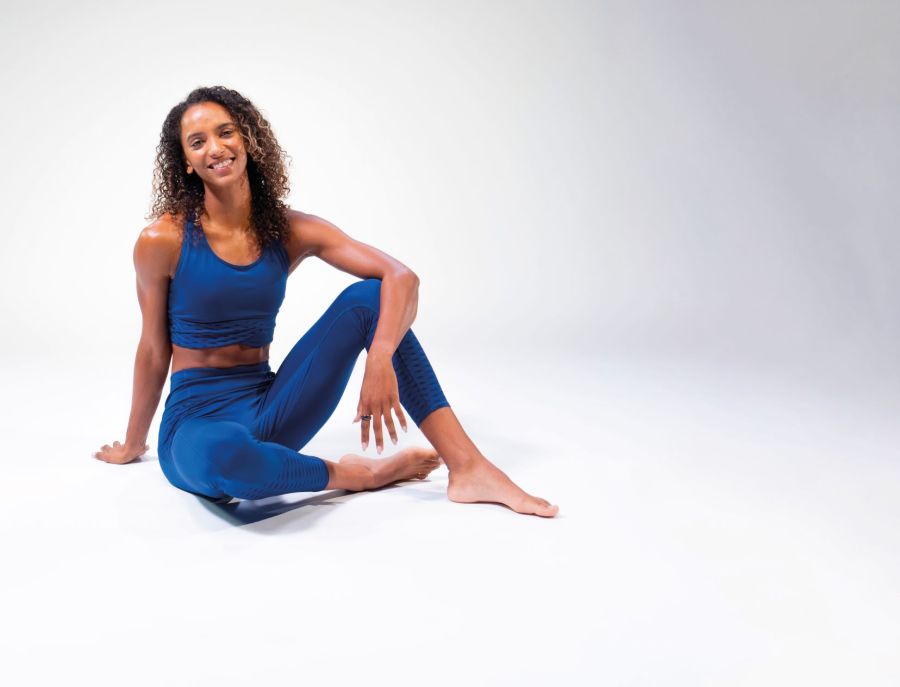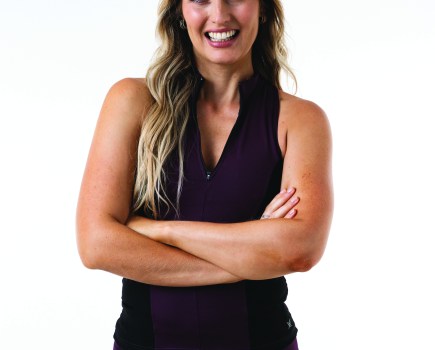Professional athlete and Fiit yoga instructor, Lina Nielsen, tells us how yoga helped her return to fitness after injury…
If there’s one woman who knows all about the performance-enhancing power of yoga, it’s Lina Nielsen. When WF talks to the British 400m hurdler and Fiit yoga instructor, she has just revealed that she was diagnosed with multiple sclerosis in 2014 at the age of 17, following a flare-up of her condition which impacted her performance at this year’s 2022 World Athletics Championships and the Commonwealth Games.
On top of this, Lina also feared her hurdling days were over for good back in 2017 when she sustained a stress fracture in her left fibula and was pulled from competing. Five years later, however, she’s in her best shape ever, both physically and mentally – and it’s all thanks to yoga.
‘If I hadn’t got injured, or received my MS diagnosis, I wouldn’t be a yoga teacher today,’ laughs Nielsen, ‘The fracture meant I couldn’t put any pressure through that bone, so my physio recommended I try yoga. I went to a yin yoga class, but it wasn’t a good experience because I was so stiff in my body and had so many imbalances.
Related: What is yoga? Benefits & basic principles for beginners
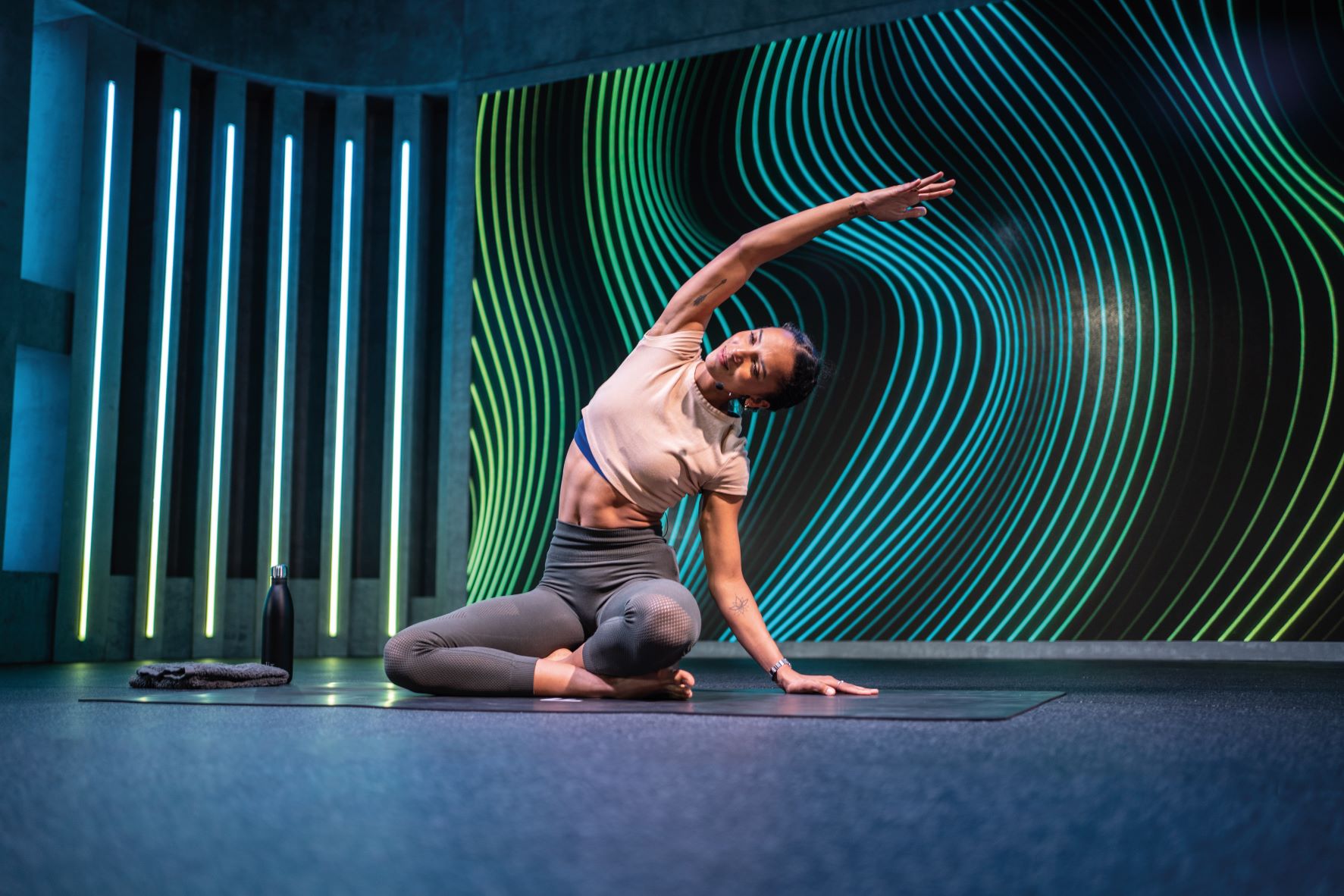
‘But because I was out of training for nine weeks, I had to find a way of moving. In the summer of 2017, I was also going through a relapse – the last one I had before this recent one – so my coordination was a bit off. But when I started yoga, I noticed that my movement got better. It was a ‘blow my mind’ moment. I hated yoga at first, but I continued going back because I realised my movement and coordination was improving with each class. That’s when I started trying other types of yoga like dynamic vinyasa yoga.’
‘When I started yoga, I noticed that my movement got better. It was a ‘blow my mind’ moment. I hated yoga at first, but I continued going back because I realised my movement and coordination was improving with each class.’ – Lina Nielsen
From that moment, Nielsen says she fell in love with yoga, and soon began piecing together a self-practice that would help improve her imbalances. ‘During the 400m hurdles, we athletes run fast while turning left, so we have a lot of imbalances on our left sides. Additionally, I also take off on my right leg to jump over the hurdle and land on my left leg afterwards, putting around seven times my body weight through my left leg.
‘Unsurprisingly, that was the leg I injured, and I was especially tight around my hips. I couldn’t even get my bum to the floor in pigeon pose! I made sure I spent longer on my left side in that pose during those nine weeks, to balance things out.’
Related: Safety first: 5 tips for training when injured
Finding a focus with yoga
Aside from the physical benefits, Nielsen quickly discovered the mental health benefits of yoga, too. ‘Taking up yoga puts you on a never-ending personal journey because there’s always something new to learn or do, and it gives you a chance to focus on something else,’ she says, before explaining how her failure to qualify for the 2019 World Championships and her MS diagnosis became the driving force behind her yoga instructor qualification.
‘I decided I wanted to go on a yoga retreat but, when I looked at yoga retreats and teacher training courses, there didn’t seem to be that much difference. I figured if I was going away, I might as well get a qualification out of it. I wasn’t planning to become a teacher, I was doing
it for myself, but there was a point in the second or third week of the four-week course where I started picturing myself teaching – not just myself, but other athletes, too.’
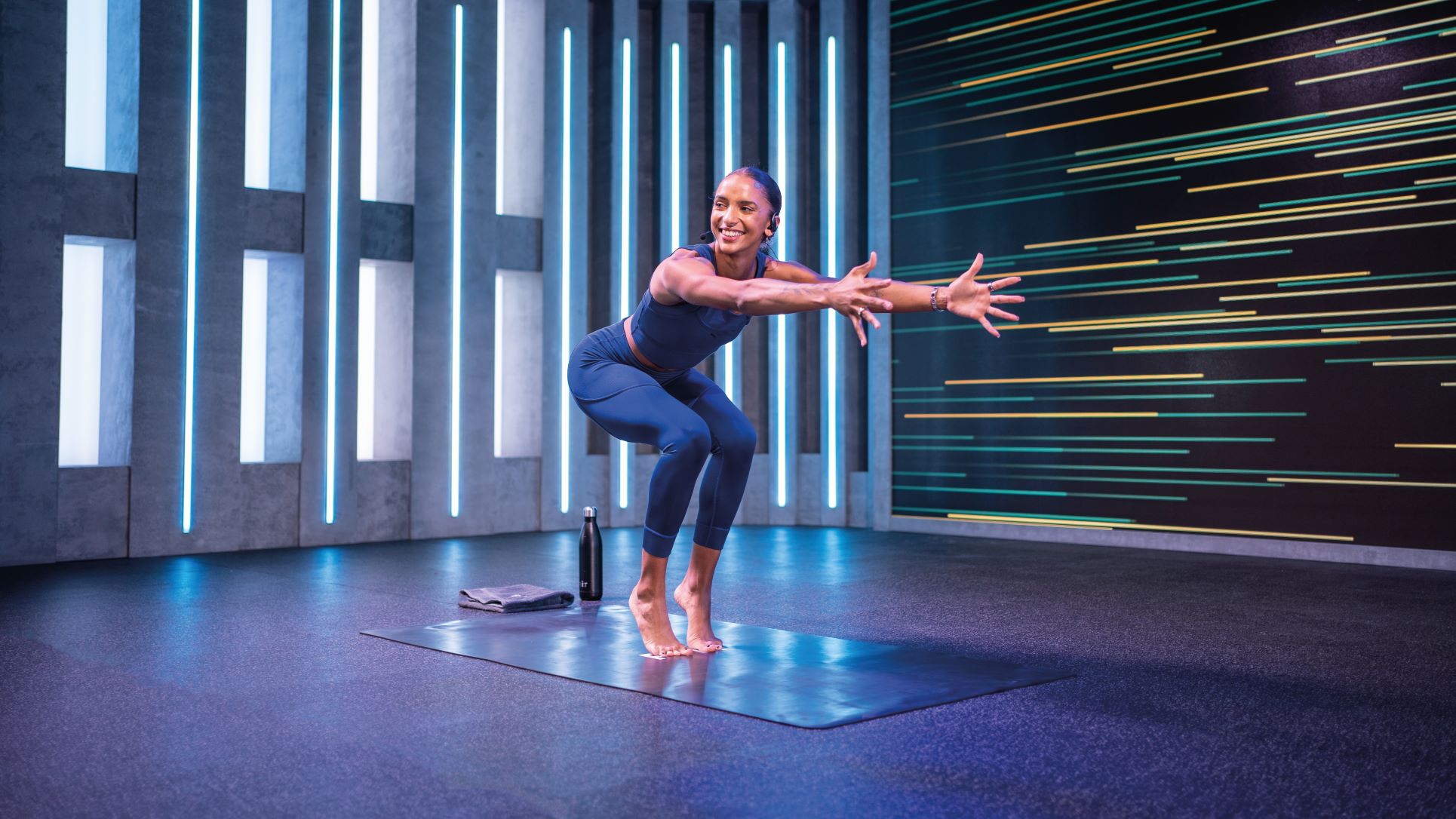
Lina Nielsen on yoga for runners
After getting her teaching qualification – an experience that took her to the northern Indian city of Rishikesh, where days were spent practising yoga, hiking into the Himalayan foothills in silence, and studying philosophy and anatomy – Nielsen started applying to teach yoga in her local area of North London. But then the pandemic hit which, as it turns out, might have been another blessing in disguise.
‘I started going on Instagram Live, and all the athletes that followed me tuned in for my classes. They loved it! I was only supposed to do one but everyone kept asking me for more, so I did one every Friday night for 12 weeks. That’s the journey, and now I teach at Fiit!’
Nielsen’s Yoga for Runners classes on leading fitness app Fiit (fiit.tv) have proven popular with all levels of runners, from the elite to those just starting out. ‘For me, it’s all about teaching people about the muscles they use while running. My classes feature moves that engage and stretch muscles at the same time while mobilising the major joints, so it’s a nice cocktail of everything you need to get ready for running,’ she explains.
‘My [yoga] classes feature moves that engage and stretch muscles at the same time while mobilising the major joints, so it’s a nice cocktail of everything you need to get ready for running.’ – Lina Nielsen
‘So many people forget that you need strong glutes for running because they are the powerhouse of your runs. They help you get off the ground and into your next stride. If your glutes are slightly weaker or they’re not activated enough, you’re going to end up using your hamstrings more, which can lead to a hamstring injury – maybe even runner’s knee or shin splints if your glutes aren’t activated enough to keep your knees stabilised.
That’s why I do a lot of chair poses, alongside lots of core work, because core stabilisation is very important, too. In a lot of my Yoga for Runners classes, we stretch to release muscles such as the hamstrings, calves and the soles of your feet, then we reactivate everything so your body is ready to go straight out for a run.’
Related: Best beginner running shoes for women 2022
Lina Nielsen’s upcoming projects
The good news is Nielsen has more (currently top secret) running-related projects coming up later this year with Fiit, and she’s also keen to explore the idea of becoming ‘the athlete’s yoga instructor’ down the line. But right now, her focus is solely on the athletics season ahead.
‘I’d almost call myself a full-time athlete for the first time ever, so yoga has taken a bit of a back seat. In a normal training week, I’m training Monday to Saturday. Mondays, Wednesdays and Fridays are “double days”, during which I hit the track and then the gym straight after, which adds up to around four-to-five hours of training a day. But my athletics training and yoga still go hand-in-hand, especially when it comes to my recovery.’
‘Yoga has 100 per cent made me a better athlete. While lots of hurdlers jump over the hurdle and then come back down, I feel I can just skim across the hurdle because my hamstrings are so flexible. That wouldn’t have happened without yoga. And before yoga, I always needed to warm up key muscles thoroughly before competition, whereas now my body is just ready to go. Although, I still go through what I call my hip rotation series (easy twist, to lizard, to ninja lunge, then back to lizard and into half pyramid pose) before and after competition.’
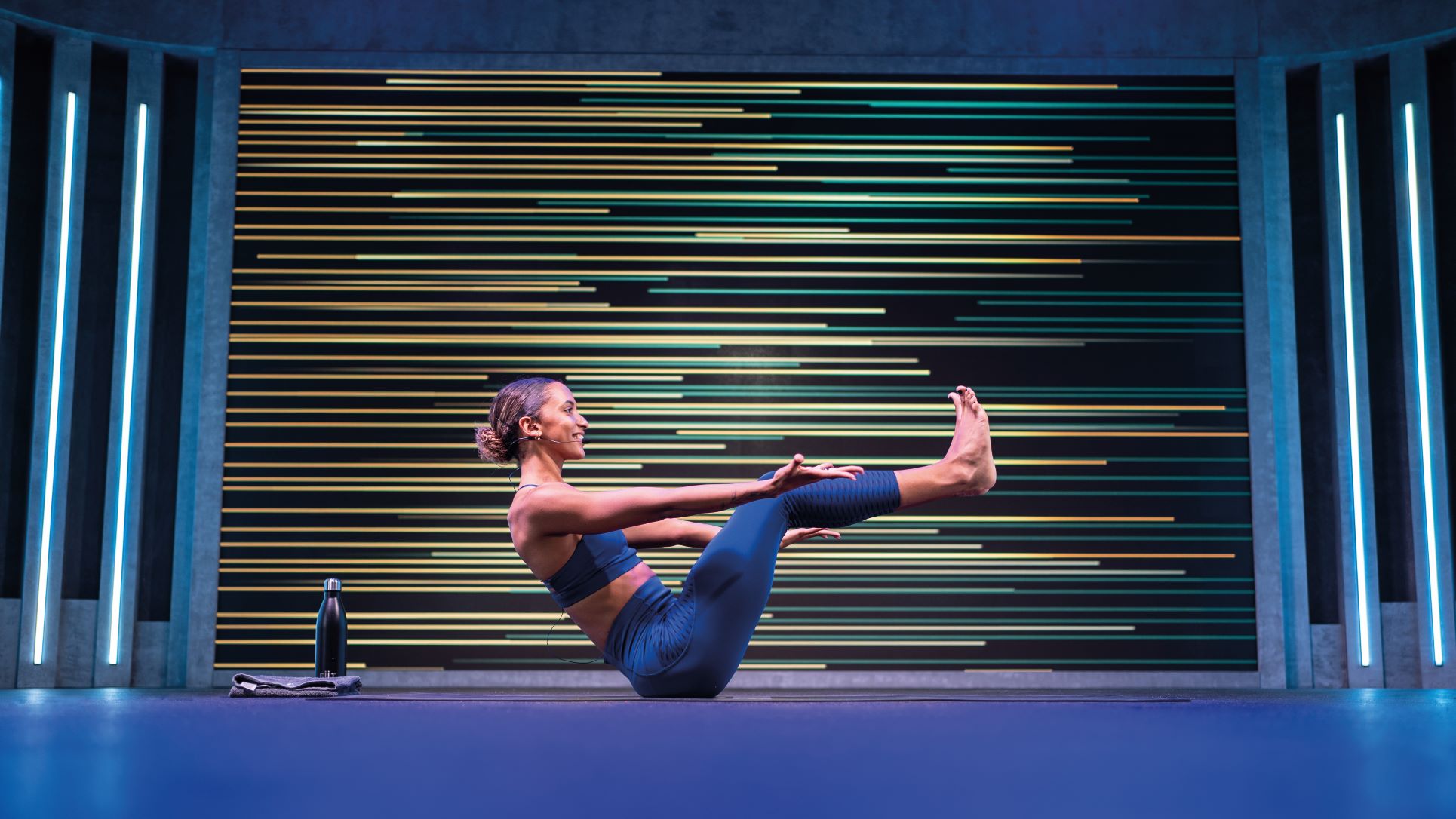
Lina Nielsen on competing alongside her twin sister
Away from the track, Nielsen says yoga helps keep her grounded and humble, while also giving her another passion to focus on. ‘When I started working with my sports psychologist, I was very much “track, track, track” in the first few sessions. But then he noticed how my “face lit up” when I mentioned yoga, so he actively supports me doing it…He says yoga keeps me bubbly and happy, and that a happy athlete is a fast athlete.’
Since then, Nielsen has managed to squeeze in one 30- to 45-minute self-practice a week, and believes she wouldn’t be where she is today if she hadn’t discovered yoga. But having her twin sister Laviai, who competes professionally in the 400m event, around definitely helps.
So, what does it feel like to be one half of the athletic power duo? ‘It’s great! I feel we are really privileged to have each other,’ she says. ‘Track and field is a very lonely sport when you’re on the starting line alone. But having someone who’s sharing the same experiences as you – the downfalls as well as the highs, and knows what you’re going through when things aren’t going your way – is amazing. The highs are especially great to share.’
Luckily, the twins compete in different events, because Nielsen admits there could be some ‘friendly competition’ between her and Laviai when they used to train together in their younger days. ‘The elbows did come out on occasion,’ she says. ‘In racing, it doesn’t matter if you’re competing against your best friend – it’s everyone for themselves, and you forget you are twins during the race. But it’s nice that you can go to each other afterwards.’
Which begs the question: does Laviai enjoy yoga, too? ‘She loves it!’, exclaims Nielsen. ‘She says it’s the only time I can tell her what to do!’

